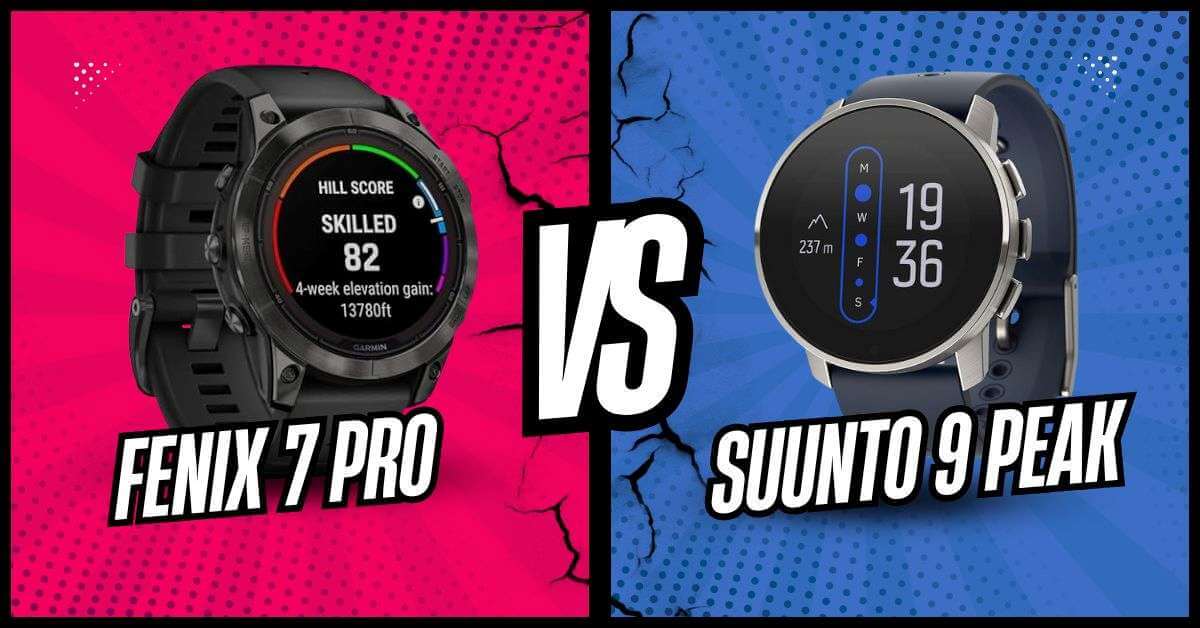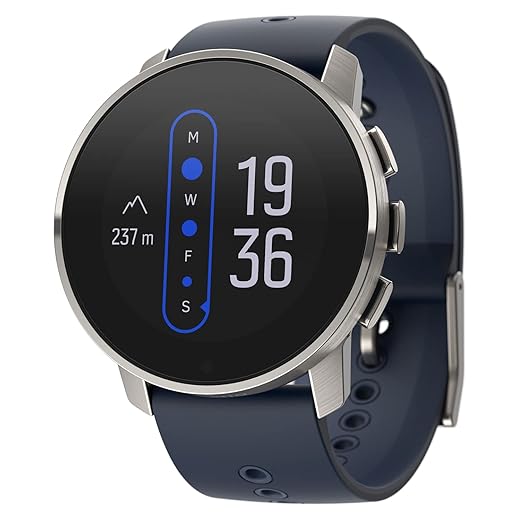Which will actually match your goals and wrist: the marathon battery life and mapping power of the Fenix 7, or the lightweight precision and clean style of the Suunto 9 Peak?
Compare the Garmin fēnix 7 Pro and Suunto 9 Peak so you can pick the best watch for your needs. This short guide highlights key differences in features, performance, and value to help you choose between premium multisport capability and a slimmer long battery life GPS option today.
Outdoor Endurance
You get a feature-packed multisport watch built to handle serious outdoor use while delivering best-in-class battery life and navigation. If you prioritize robust training data, long runtimes and durable materials, this model gives you a very capable all-around tool without compromising on accuracy.
Lightweight Explorer
You get a slim, premium-feeling watch that focuses on comfort and reliable core tracking with long battery options. If you want a lightweight daily wearable that still handles serious outdoor sessions, this is a strong, pared-down alternative to bulkier multisport watches.
Fenix 7 Pro
Suunto 9 Peak
Fenix 7 Pro
Suunto 9 Peak
Fenix 7 Pro
Suunto 9 Peak
Apple Watch vs Garmin: Why I Made the Switch
At-a-glance specs and head-to-head overview
Core specs – quick look
Get a clear side-by-side breakdown of the core specs so you can quickly spot the technical winners. Below are concise callouts for display, materials, weight, water rating, sensors, storage, and standout hardware features.
Garmin fēnix 7 Pro Sapphire Solar
The fēnix 7 Pro has a 1.3 inch sunlight-readable display in a 47 mm case with a Power Sapphire solar lens, titanium bezel, and fiber-reinforced polymer case. Weight is about 73 grams. Water rating is 10 ATM (100 meters). Built-in sensors include multi-band GNSS (SatIQ), wrist heart rate, Pulse Ox, barometric altimeter, compass, and accelerometer. On-device storage is 32 GB. Key hardware extras are solar charging and an integrated LED flashlight.
Suunto 9 Peak
Suunto lists a 49 millimeter display measurement in a slim grade 5 titanium case with sapphire glass and a silicone strap. Weight is roughly 50 grams. Waterproof to 100 meters. Sensors include GPS, wrist heart rate, barometer for altitude, and blood oxygen measurement for acclimatization. Suunto emphasizes intelligent battery modes with up to 170 hours runtime in certain GPS modes. On-watch storage is not listed the same way as Garmin.
Head-to-head highlights
Feature Comparison Chart
Performance and sports features on the Fenix 7 Pro and Suunto 9 Peak: GPS, sensors, battery, and tracking
GPS accuracy and satellite support
Garmin fēnix 7 Pro uses multi-band GNSS with SatIQ to switch between single-band and multi-band for the best mix of accuracy and battery life. That makes it more reliable in dense trees, canyons, and near tall buildings when you need pin-point tracks.
Suunto 9 Peak uses single-band GPS with robust signal processing. It tracks well for most outdoor activities and gives long runtimes, but it will not match the multi-band precision of the fēnix in the toughest reception conditions.
Sensors and wrist heart rate fidelity
Garmin packs advanced sensors: wrist heart rate, Pulse Ox, barometric altimeter, compass, and accelerometer. Wrist HR is very good for steady runs and general training. It is more consistent during interval sessions than many rivals, but chest straps are still best for high intensity or swim HR.
Suunto offers wrist heart rate, barometer, and SpO2 for altitude. Its wrist HR performs well for steady endurance work and daily tracking. Expect more variance for high cadence intervals and aggressive cycling.
Battery life and real-world runtimes
Garmin advertises up to 22 days in smartwatch mode and gains extra hours with solar exposure. With multi-band or highest GPS accuracy active you should plan for significantly shorter GPS runtimes, but SatIQ helps extend usable time on long trips.
Suunto advertises up to 170 hours in certain GPS modes using intelligent battery profiles. In real long outings you can run multiple days of continuous tracking by switching to Suunto power modes. Battery strategy is simpler on Suunto and highly effective for ultra-endurance use.
Sports modes, navigation, and training features
Choose Garmin when you want top-tier GNSS and deep training metrics. Choose Suunto when you want a lighter watch with excellent battery longevity for long adventures.
Design, comfort, durability, and daily usability
Fit and comfort
You will notice a clear difference on the wrist. The fēnix 7 Pro is a 47 mm, heavier watch at about 73 grams. It sits solidly and feels premium, but some people find it bulky for sleep or all-day wear if you have smaller wrists. The Suunto 9 Peak is much lighter and slimmer at about 1.83 ounces. Its titanium case and thin profile make it more comfortable for 24/7 wear and better suited to smaller wrists.
Display and visibility
Garmin gives you a larger 1.3 inch, high-resolution display that reads extremely well in bright sun. The Suunto screen is more minimal and designed for efficiency. You can still read it outdoors, but the Garmin display is easier to scan at a glance during hard efforts.
Durability and materials
Both the Fenix 7 Pro and Suunto 9 Peak use sapphire glass for scratch resistance. Garmin builds the fēnix with a fiber-reinforced polymer case and titanium bezel and rear cover for a rugged feel. Suunto uses grade 5 titanium for a lighter, very durable case. Suunto specifies waterproofing to 100 meters. Both are built to withstand outdoor use and daily knocks.
Daily usability and extras
Garmin adds practical extras that change daily life. The solar Power Sapphire lens extends smartwatch runtime when you get sun. The built-in LED flashlight is genuinely useful for early-morning runs and campsite tasks. Suunto focuses on a slim, durable core experience with long battery life through efficient power modes rather than solar.
Price, value, software ecosystem, and extras
Price and typical bundles
You will find the Garmin fēnix 7 Pro listed around $754 on Amazon and the Suunto 9 Peak around $299. Garmin listings often include variants and bundles such as different strap materials, or multi-band packs sold by third party sellers. Suunto listings are usually straightforward with the watch and a charging cable. If budget matters, Suunto gives stronger immediate value for core GPS and battery performance. If you want maps, advanced sensors, and extras, Garmin justifies the higher price.
Warranty and customer support
Both brands offer a one year limited manufacturer warranty in the US. Amazon return windows and seller support vary, so buy from Amazon or an authorized dealer if you want easier returns. Garmin has extensive online support, firmware notes, and larger global service operations. Suunto has good support but fewer local service centers in some regions.
Software ecosystem and third party compatibility
Garmin
Suunto
Garmin wins for third party app breadth and on-watch mapping. Suunto wins for simple route planning and heatmap discovery.
Smartwatch features and extras
Match value to your priorities
Final Verdict: Which watch should you choose?
Pick Garmin fēnix 7 Pro for multisport training, advanced metrics and runtime. It is your clear winner for performance.
Choose Suunto 9 Peak for daily wear, long battery life, and better Amazon value. Check weight, battery mode and Amazon price before you buy.









